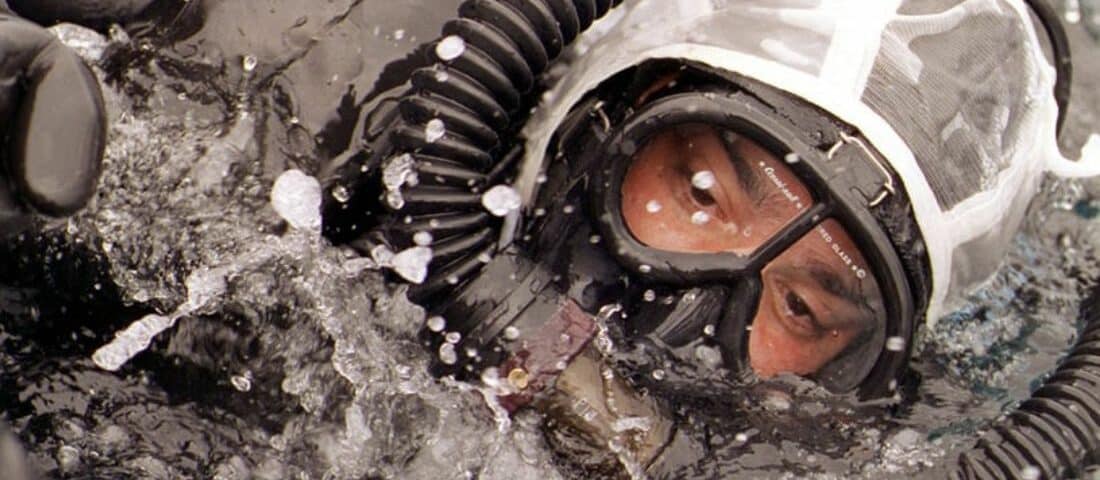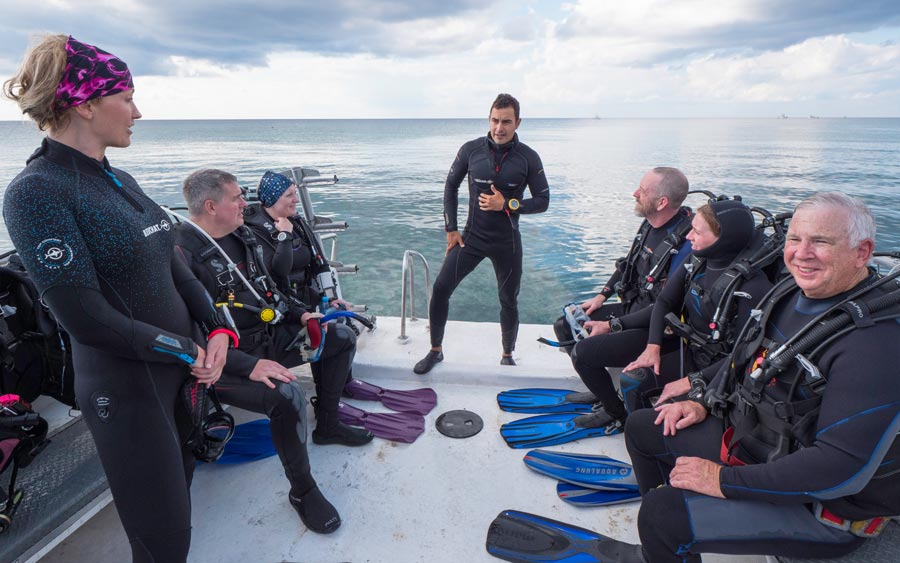Closed Circuit Rebreathers (CCR) are the latest frontier of technical diving, a technology that enables underwater explorers to dive into the depths with increased discretion and for longer durations. This article aims to serve as a guide for those interested in CCR diving, providing you with the information and insights to make informed decisions on your next underwater adventure.

Underwater Ecosystems: Exploring Unique Marine Ecosystems
28/02/2024
First-Time Diver’s Guide: Tips, Safety, and Amazing Places
13/03/20241. Understanding Closed-Circuit Rebreathers (CCRs)
- 1.1. What Are Closed-Circuit Rebreathers?
- 1.2. How Do Closed-Circuit Rebreathers Work?
- 1.3. Closed-Circuit Rebreathers vs Open-Circuit Systems
- 1.4. Exploring the Benefits of CCR Diving
- 1.5. Different types of CCRs
3. Maintenance and Care of Closed-Circuit Rebreathers
- 3.1. Common problems that can occur with CCRs
- 3.2. Common maintenance tasks
- 3.3. How to check your Closed-Circuit Rebreather is in good working condition
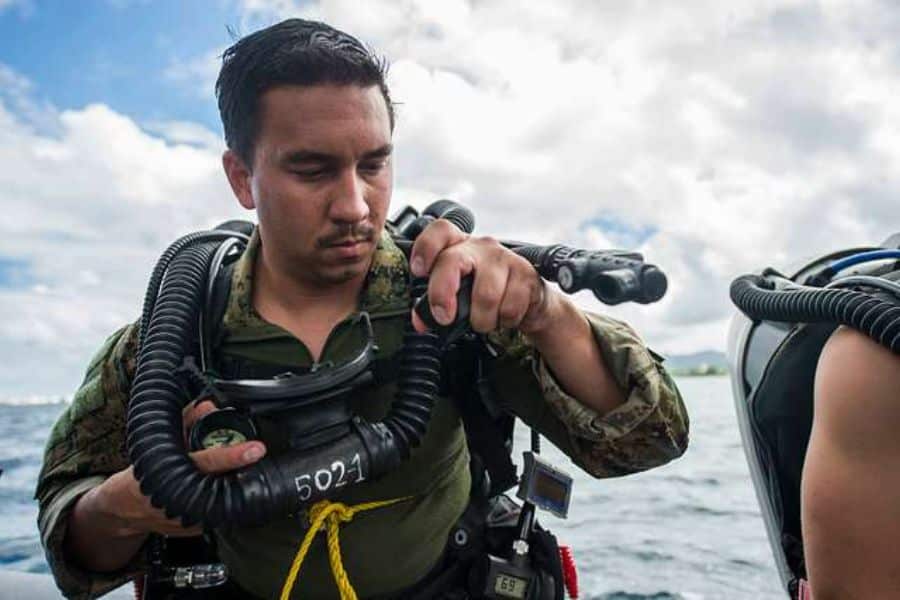
1. Understanding Closed-Circuit Rebreathers (CCRs)
1.1. What Are Closed-Circuit Rebreathers?
Closed-circuit rebreathers, often abbreviated as CCRs, are advanced diving devices designed to recycle and reuse the diver’s exhaled breath. Unlike traditional open-circuit scuba systems, which expel exhaled gas into the surrounding water, CCRs retain the gas, remove carbon dioxide, and replenish oxygen for reuse. This closed-loop system not only extends dive times significantly but also enhances discretion by minimizing the release of bubbles, making CCR diving ideal for exploring marine environments without disturbing aquatic life. In essence, Closed-Circuit Rebreathers revolutionize the diving experience, offering unparalleled efficiency, and exploration opportunities beneath the waves.
1.2. How Do Closed-Circuit Rebreathers Work?
As an experienced diver, you’ll appreciate the intricacies behind these advanced systems. A closed-circuit rebreather is an extraordinary piece of diving technology that allows you to recycle breathable gas.
When you exhale using a closed-circuit rebreather, the air returns to you clean once it passes through the system. Instead of being discarded, it goes through a chemical filter. This filter effectively removes carbon dioxide (CO2) and leaves the other gases that make up the air to be reused again.
Simultaneously, the CCR introduces fresh oxygen (O2) from an exclusive tank. This replenishes the oxygen consumed by your metabolism during breathing. The system maintains a precise balance, ensuring you have the optimal amount of O2 for safe diving.
1.3. Closed-Circuit Rebreathers vs Open-Circuit Systems
Closed-circuit rebreathers (CCRs) and Open-Circuit Systems represent two distinct approaches in scuba diving equipment, each with its own advantages and considerations.
CCRs recycle exhaled gas, filtering out carbon dioxide and replenishing oxygen, enabling longer dives and reduced gas consumption. Their silent operation is ideal for observing marine life without disturbance.
Conversely, open-circuit systems release exhaled gas into the water as bubbles, consuming more gas and potentially startling marine life with their noise.
Closed-Circuit Rebreathers, while more complex and expensive, offer extended dive times and discreet operation but require specialized training and maintenance.
On the other hand, open-circuit systems are simpler, cheaper, and more versatile, making them accessible to divers of varying experience levels.
Ultimately, selecting the appropriate system depends on the diver’s preferences, diving goals, and willingness to invest in training and equipment. Both systems contribute to underwater exploration, catering to the needs and preferences of different divers.
| Aspect | Closed-Circuit Rebreathers (CCRs) | Open-Circuit Systems |
| Gas Recycling | Recycles exhaled gas, filtering out CO2 and replenishing O2. | Exhaled gas released into water as bubbles, not reused. |
| Gas Consumption | Significantly lower, as gas is recycled and reused. | Higher, as each breath comes directly from the tank. |
| Equipment Complexity & Cost | More complex and expensive, requiring specialized components and maintenance. | Simpler and less costly, with basic components. |
| Training & Certification | Requires specialized training due to complexity and gas management. | Basic scuba diving certification is sufficient. |
1.4. Exploring the Benefits of CCR Diving
Diving deeper, longer, and with reduced decompression times
Compared to traditional open-circuit diving, Closed-Circuit Rebreather (CCR) diving unlocks a world of benefits for discerning divers seeking extended dive times, enhanced performance, and unparalleled discretion. By recycling exhaled breath, CCRs offer significantly longer bottom times, ideal for exploring deep wrecks, technical environments, and remote dive sites. This gas efficiency not only extends dives but also reduces dependence on bulky tanks, simplifying logistics and making CCRs ideal for challenging locations.
CCR scuba is diving without disturbing
Furthermore, CCR diving’s silent operation, free of noisy bubbles, fosters a serene underwater experience, perfect for photographing marine or just admiring life without disruption.
When diving in a cave, the absence of CCR bubbles provides even greater benefits for both the cave itself in terms of environmental conservation and for the diver, who can progress without disturbing mud particles on the cave ceiling, thus maintaining visibility.
Personalization, and above all adaptability in diving.
Additionally, CCRs boast customizable settings that allow divers to fine-tune their equipment for specific dive profiles, enhancing both comfort and safety. Advanced features like real-time oxygen monitoring further mitigates risks, ensuring a secure underwater journey.
However, it’s important to acknowledge that CCR diving requires specialized training and certification to manage its unique demands effectively. Ultimately, CCR diving represents the cutting edge of dive technology, empowering exploration while prioritizing safety and sustainability for the discerning diver.
1.5. Different types of CCRs
Closed circuit rebreathers that include pure oxygen in the bag or counter-lung. These were the first devices, but they had a major drawback. Pure O2 is toxic and couldn’t be taken below 6 meters depth without risking oxygen toxicity.
Semi-closed circuit rebreathers that use nitrox. In them, depth limits are determined by the partial pressure of oxygen in the mixture. On the other hand, decompression is somewhat less efficient than with the closed system.
Since our body only consumes oxygen, the rest of the gases must be eliminated. Hence these rebreathers are semi-closed. Occasionally, they release excess nitrogen into the environment. These rebreathers do have bubbles.
Within semi-closed rebreathers, we find two subclasses.
Active semi-closed circuit rebreathers. These continue to introduce gas mixture into the counter-lung constantly. This ensures that we always have the appropriate amount of oxygen, but their efficiency would be 1:4.
Passive semi-closed circuit rebreathers adapt the gas flow to the diver’s breathing, optimizing gas supply for longer dives and lower consumption. Their efficiency ranges from 8:1 to 10:1.
Closed circuit rebreathers that include oxygen and another diluent gas. This allows for diving to greater depths and improves decompression. Within this classification, we find three subclasses:
Electronic closed circuit rebreathers (eccr). This is what would be considered the quintessential rebreather. The device monitors the oxygen level inside the counter-lung using sensors, and when it detects low oxygen levels, it allows oxygen to enter and compensates for it. Its efficiency is around 40:1.
Mechanical closed circuit rebreathers (mccr). They have a port that injects a continuous fixed amount of oxygen, just below the diver’s estimated consumption. The diver anticipates their needs and manually adds the required oxygen occasionally.
Hybrid closed circuit rebreathers are a combination of electronic and mechanical, where the mechanical part maintains the minimum oxygen level, and the electronic part adds oxygen up to the levels indicated by the diver.
Closed circuit rebreathers can be used with different gas mixtures like nitrox, trimix o heliox.
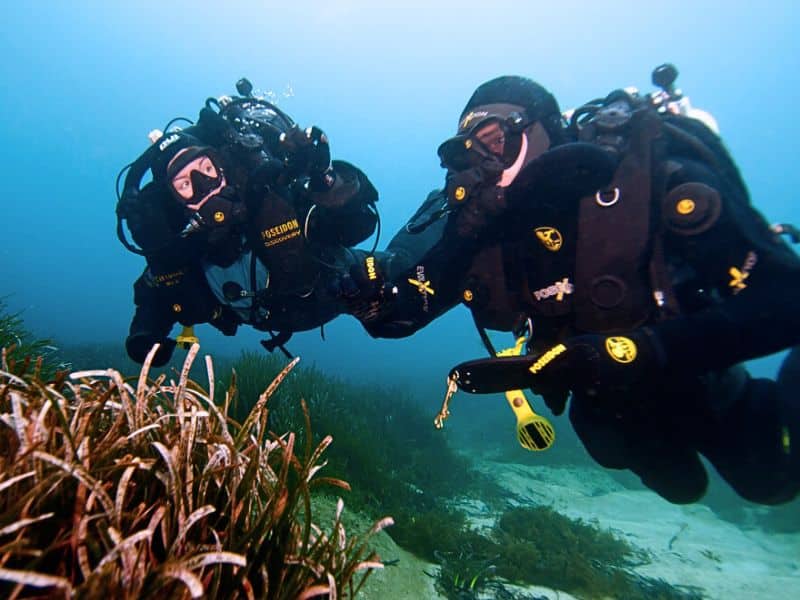
2. Is RCC Diving Safe?
2.1. Risks Of Closed Circuit Rebreather Diving
While Closed-Circuit Rebreathers (CCRs) unlock a world of diving benefits, appreciating the inherent risks is crucial for a responsible underwater experience. Here’s a breakdown of key areas to consider:
- Complexity and Skill Demands:
CCR diving requires advanced training and proficiency due to its complex nature. Mastering equipment operation, gas management, and emergency procedures is essential to mitigate life-threatening situations.
- Equipment Reliability:
Like any mechanical device, CCRs can experience malfunctions during dives. Rigorous maintenance schedules, thorough pre-dive checks, and implementing redundant systems are paramount to reducing this risk.
- Gas Management and Toxicity:
Managing gas mixtures, particularly oxygen concentrations in CCR diving, is critical. Inaccurate oxygen monitoring can lead to hypoxia (oxygen deficiency) or oxygen toxicity, both posing significant health risks. Specialized training and strict adherence to safety protocols are non-negotiable.
- Carbon Dioxide Management:
CCRs rely on efficient removal of carbon dioxide. System failures can lead to hypercapnia (CO2 buildup) and its associated impairments. Understanding and maintaining effective CO2 removal systems is crucial.
- Data and Experience Threshold:
Limited data exists on the long-term risks of CCR diving due to its relatively new technology. Divers must stay informed about ongoing research to effectively manage associated risks.
Diving beyond your training and experience significantly increases the risk of accidents. Rushing into advanced CCR diving without proper preparation is a common factor in fatalities.
- Additional Considerations:
Buoyancy control in CCR diving relies less on breath manipulation, presenting a new challenge for divers transitioning from open-circuit systems.
Traveling with bulky CCR equipment can be challenging due to logistical hurdles and restrictions on specific components like oxygen sensors.
- Human Error:
Pre-dive oversights, lapses in PO2 (partial pressure of oxygen) monitoring, and mishandling of issues can all contribute to potential mishaps.
Navigating these risks effectively requires comprehensive training, meticulous preparation, and an unwavering commitment to safety protocols.
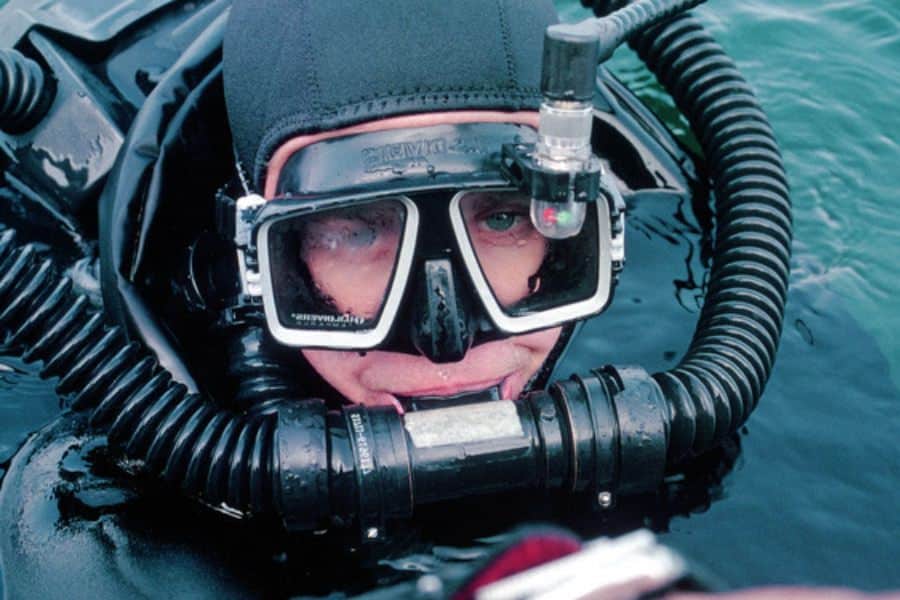
3. Maintenance and Care of Closed-Circuit Rebreathers
3.1. Common problems that can occur with CCRs
- Sensor Issues:
Sensor failure: CCRs rely on sensors like oxygen sensors to monitor gas levels and provide accurate readings. However, these sensors can malfunction, leading to incorrect readings or complete data loss. Regular maintenance and calibration are essential to prevent such issues.
Oxygen sensor drift: Over time, oxygen sensors can experience drift, resulting in inaccurate oxygen level readings. This can increase the risk of oxygen toxicity or hypoxia. Regular calibration and replacement of oxygen sensors are necessary to maintain accuracy.
- Electronic Malfunctions:
Electronics malfunction: Various electronic components in CCRs control functions like gas mixing and monitoring. Malfunctions in these components can disrupt the proper functioning of the entire system. Regular equipment checks and servicing can help identify and address any electronic issues.
- CO2 Scrubber Concerns:
CO2 scrubber failure: CCRs rely on CO2 scrubbers to remove carbon dioxide from the breathing loop. If the scrubber fails or becomes saturated, it can lead to a rise in CO2 levels and hypercapnia. Regular inspection and replacement of the scrubber material are crucial for its proper functioning.
- Additional Considerations:
Battery issues: Battery failure or depletion can result in a loss of critical functions like gas monitoring and control, jeopardizing safety. Regular battery checks and replacements are essential.
Leakage: As a closed-loop system, any leakage in hoses, connections, or the CCR itself can compromise the integrity of the breathing gas mixture. Regular inspections and maintenance are crucial to detect and address any potential leaks.
3.2. Closed-Circuit Rebreather Common maintenance tasks
Regularly inspect your RCC for any of the potential faults we’ve just discussed, looking for signs of wear such as cracks, corrosion, or leaks.
Sensor Care: Ensure proper functioning of oxygen sensors and replace them per manufacturer recommendations.
Scrubber Check: Keep the CO2 scrubber properly packed and replace absorbent material as necessary.
Consistent Cleaning: Regularly clean your CCR to prevent salt, sand, or debris buildup. Inspect and clean all CCR components, including hoses, valves, canisters, and electronics regularly.
Professional Servicing: Have your CCR serviced by certified professionals at recommended intervals.
Proper Storage: Store your CCR in a cool, dry area away from direct sunlight.
Monitor battery levels, ensuring they’re charged and functional to power electronic components.
Conduct leak tests periodically to detect any hose or connection leaks.
Stay updated on software and firmware updates for your CCR model to benefit from improvements.
Each CCR model has unique maintenance needs, so consult your user manual for detailed instructions.
Keep detailed records of maintenance tasks in a logbook or documentation for reference.
By adhering to these maintenance practices, you’ll ensure your CCR operates optimally, enhancing safety and enjoyment during dives.
3.3. How to check your Closed-Circuit Rebreather is in good working condition
Before embarking on any underwater adventure, it’s paramount to conduct meticulous pre-dive assessments to confirm the optimal functionality of all Closed-Circuit Rebreather (CCR) components.
Sanitization: Regular disinfection routines are essential to thwart bacterial proliferation within your CCR system, thereby upholding hygiene standards and safeguarding your health during dives.
Assembly Protocol: Every dive commences with the precise assembly of your CCR apparatus. Methodically connect all components, following a detailed checklist to mitigate any potential oversights or operational glitches.
Comprehensive Component Evaluation: A comprehensive evaluation of all CCR components is indispensable. Test the oxygen sensors, scrutinize the efficiency of the scrubber, and verify the functionality of the electronic systems to ascertain optimal performance.
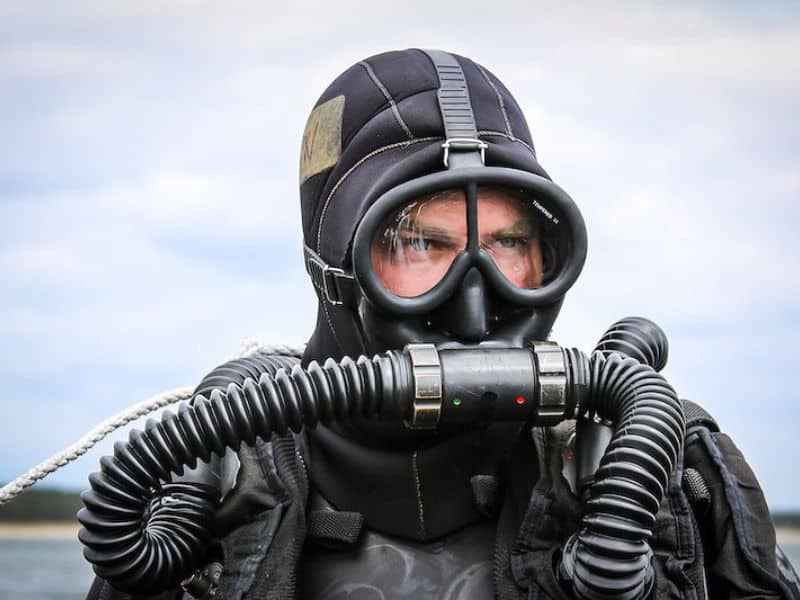
4. Expert Tips for Safe and Effective CCR Diving
4.1. Essential Skills for Closed-Circuit Rebreather Divers
- Unwavering Buoyancy Control for CCr Diving:
Impeccable buoyancy control is paramount in CCR diving due to the constant volume nature of the rebreather loop. This ensures smooth and controlled ascents and descents, mitigating discomfort and potential safety hazards.
- Enhanced Situational Awareness:
CCRs require heightened situational awareness due to the complexity of the system. Divers must maintain a keen focus on surroundings, depth, time, and the real-time status of their CCR unit.
- Meticulous Gas Management:
Gas management in CCR diving demands meticulous planning and execution. This involves precisely calculating and managing oxygen, diluent, and bailout gas supplies. Continuous monitoring throughout the dive is crucial for maintaining a safe breathing mixture.
- Proficient Bailout Procedures:
Even with the most advanced technology, unforeseen circumstances can arise. Mastering bailout procedures involving a swift and second-nature transition to an open-circuit bailout system is essential for potentially life-saving interventions.
- Pre-dive Meticulousness:
CCR diving requires meticulous pre-dive checks following a detailed checklist to ensure flawless assembly and functionality of all systems. This rigorous routine before every dive minimizes potential hazards and maximizes safety.
- Problem-solving Proficiency:
The ability to analyze and quickly respond to any CCR malfunctions is crucial. This entails identifying issues, isolating problems, and taking appropriate corrective actions.
By diligently honing these essential skills through specialized training and ongoing practice, aspiring CCR divers can embark on their underwater adventures with confidence and enhanced safety.
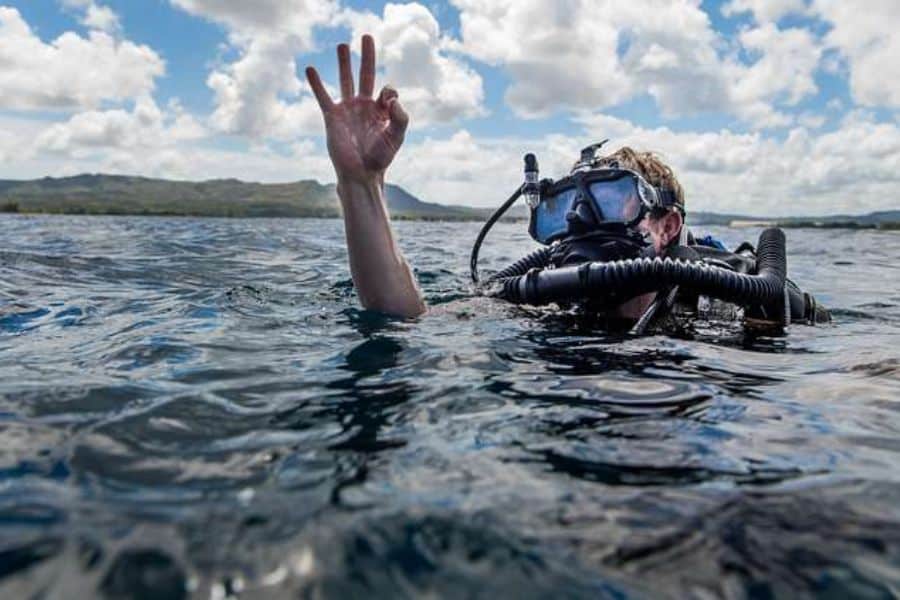
4.2. Common mistakes to avoid diving with a Closed Circuit Rebreather
Avoiding common mistakes is crucial to ensuring optimal performance when diving with a Closed Circuit Rebreather (CCR). Here are some errors you should steer clear of:
Lack of training: Diving with a closed circuit rebreather without proper training and certification is like driving without lessons. Lack of preparation can jeopardize your safety and that of other divers.
Neglecting maintenance: Just like you clean your house, fix what’s broken, and replace worn-out items for a better quality of life, the same applies to diving with a CCR. Proper maintenance is essential to prevent equipment failures during dives.
Inadequate gas monitoring: What happens if you don’t check your fuel level before a long car journey? You might not make it to your destination. The same applies if you neglect to monitor your gas mixes, especially oxygen, except a car can stop for refueling, and you can’t. Be aware that mishandling gases can result in hypoxia or oxygen toxicity.
Lack of emergency preparedness: Do not underestimate the importance of being prepared for emergencies. Regularly practicing problem-solving procedures and always carrying emergency equipment saves lives.
Exceeding depth and time limits: It’s like venturing into unknown territory without a map, food, or warm clothing: a sure disaster. Exceeding recommended depth and time limits for your level of training and experience increases the risk of accidents and decompression issues.
Ignoring environmental conditions: Submarine environmental conditions such as visibility, currents, and temperature can affect your safety and comfort during the dive, just as weather can influence a hiker’s experience in the mountains.
By avoiding these common mistakes and practicing good closed circuit rebreather diving techniques, you can enjoy safer and more rewarding underwater experiences.

5. Choosing the Right Closed-Circuit Rebreather Training
The journey of CCR diving requires specialized training that equips you with the knowledge and skills for a rewarding underwater exploration. But how do you ensure you’re picking the right training program? Here are some crucial factors to consider:
Training Qualifications: Formal training is the bedrock of CCR diving. Look for programs accredited by reputable agencies like PADI, TDI, and IANTD. Consider the specific qualifications offered and how well they align with your diving goals and aspirations.
Equipment Compatibility: Not all CCR training programs are created equal. Some may focus on specific rebreather models. If you already have a preferred unit, ensure the training program is compatible with it. This ensures you get the most out of your learning experience.
Instructor Expertise: The guidance of experienced CCR instructors is invaluable. Seek out instructors with a wealth of knowledge and expertise across various rebreather models. Their insights can provide personalized recommendations tailored to your skill level and objectives.
Defining Your Diving Aspirations: What are your diving dreams made of? Whether it’s exploring the vast openness of the ocean, delving into mysterious caves, or uncovering hidden wrecks, define your aspirations clearly. Different rebreathers excel in different environments, so choose a training program—and potentially a Closed-Circuit Rebreather unit—that aligns with your future diving endeavors.
With proper training, preparation, and Closed-Circuit Rebreather maintenance, CCR diving can be a safe and enjoyable way to explore the underwater world.
Note: All the images featured in this article belong to SJ Alice Bennett or are in the public domain. This article is intended for informational purposes only and no economic gain is sought from it.



